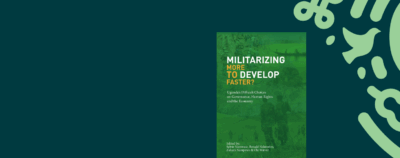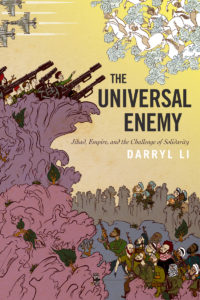Representation of the non-Western Islamist fighter has long had to deal with the Eurocentric and asymmetrical nature of international relations. As political challengers to political orders driven by the global circulation of their ideas and their acts of force, these actors nonetheless met more often than not with a reading of their actions that located them incipiently and hopelessly as enemies of mankind (hostes humani generis). The violence, and at times extreme violence, of these actors placed them—by their very actions—in the realm of deep-seated opposition to states and societies. Yet, on the one hand, other violent nonstate actors, notably those operating amidst Western societies or aligned with their interests abroad, were on the whole seldom depicted with the same unnuanced representation of their nature. (Indeed, some, such as the so-called private military contractors, were actively brought in the realm of the state, and efforts such as “codes of conduct” pursued to normalize their status, and therefore their private violence.) On the other hand, problematically stripped of its political component, the nature of these different actors was apprehended one-dimensionally as a singular contra mundum threat.
It is within the parameters of such closed vistas that the (non)discussion of the transnational nonstate armed group Al Qaeda started in the fall of 2001. It persisted in that form throughout the decade as the historical phenomenon morphed further, notably with its global dissemination under the form of regionalized subentities. The perspective came later to be reenergized at the occasion of the rise of the Islamic State, a related but further mutated entity, and it persists to this day. Even when addressed comparatively along with the history of other rebels, militias, vigilantes, warlords, terrorists, insurgents, and paramilitaries, the Islamist armed group remains a particular kind of entity, conjuring up a sui generis image. Whereas the former diverse groups could be examined in terms addressing notionally their multifaceted dynamics of governance, control, and resilience, the armed nonstate Islamist fighter was reflexively boxed culturally and religiously. In truth, but for precious few exceptions, academe largely missed the complexity of Al Qaeda, the Islamic State, and related groups. Most of that policy-shaped, journalism-driven scholarship already reads like the quaint, ideology-filled, anti-communist literature of the Cold War exceptionalizing the nature of the “red scare.”
As Darry Li’s welcomed contribution, The Universal Enemy—Jihad, Empire, and the Challenge of Solidarity demonstrates, the Islamist foreign fighter is a far more complex figure. If it can be said to be unique, it is not merely because of its militant religiosity but because of its own brand of universalism, argues Li convincingly. Over the past forty years, this type of actor has emerged steadily as an important component of the evolving grammar of early twenty-first century international affairs. While we must continuously insist on the complexity and evolving nature of this set of agents and their geographical diversity, three main dynamics arguably presided over the inception of their history, namely transnationalism, martiality, and transcendence of the state. The transnational trope is most crucial to this history, both structurally and conjuncturally. It was not completely new, and a demo version of it was displayed—for different reasons and in a different context—by the Palestinian fedayeen fighters in the 1970s (and other nonviolent forms were attempted variously in the Non-Aligned Movement, Pan-Islamism, Pan-Arabism, and Pan-Africanism). The trait was then altered importantly twenty or so years later. The story of these latter-day men (and in time, women, as in the case of the 2010s Islamic State) is of continuous movement, a sort of existential displacement seeking to achieve that universality which Li discusses. Such steady crisscrossing of the planet—from Bosnia’s Odred Elmudžahedin to American, French, or Australian ”foreign fighters” by way of Nigerian Boko Haram, Somali Al Shabaab, or Chechen Caucasus Emirate—is the primary form this phenomenon takes.
The transnational dimension was similarly underscored by the self-empowered militarization of these entities—a martiality that was shaped by the actors’ own campaigns as much as it was enabled by the wars led concomitantly by the major powers (the United States in the Middle East, Russia in the Caucasus and later on in the Levant, and France in the Sahel and in West Africa, notably). Every ten years or so, the movement (if it can be described thus without being too reductionist), was thus reinvigorated at the occasion not so much of a new generation (that too, inevitably) but of the materialization of a new armed conflict opportunity: the 1979 Soviet invasion of Afghanistan, the 1991 Gulf War, the 2003 Iraq War, and the 2011 Syrian civil war. In particular, the rise of these fighters accompanied the global advance of the United States, that imperial superpower that Li describes as “a settler polity that has long engaged in alien rule over foreign territories while also cultivating various forms of influence over weaker countries.” Though asymmetrical, the match was rather logical and most revealing; state hegemony versus infra-state counter-hegemony.
These three aspects were there all along, explicitly given by Osama Bin Laden, whose first chosen names for his organization, used briefly in the early texts, were al qaeda al ‘askariya (the military base) and sijil al qaeda (the base’s registry). There it was all from the get-go: war, transnationality, and networking, an all soon-to-be-tech-savvy-branching out pointing out away from territorial contiguity and from local politics beaming onto a global stage. This combination must be understood as what it really is: a conscious and acted-upon departure from state-owned, state-acted, state-defined, and state-regulated violence. For all its being treated suspiciously “in a world order that favors the model of the citizen-soldier as the paradigm for legitimate violence,” in the words of Darryl Li, it has been a historically consequential development—one whose longer-term implications are not yet fully mapped.
Finally, the project pursued by these actors spoke of a crucial surpassing of the state, indeed an original way of conceiving of violence, order, and legitimacy in a manner that made the state look not so much like an enemy (it was of course) but more fundamentally as nuisance, an obsolete thing getting in the way of a more ambitious outlook on their messages from and to world. This perspective is fundamental in helping understand the history of the state qua power and of empire as also possibly resulting from “counter-empire” push-back. Far too problematically, the post-9/11 mainstream terrorology canon has led us to see these actors ahistorically, detaching their sociogenesis from their deeper contexts in favor of an elevated reading of the religious aspect and the violence.
Away from the racialized Global War on Terror narratives (official and academic), the trendy yet pathologizing ”violent extremism,” and the moralistic (and state-anchored) security perspectives, Li’s text, using ethnographic history from below, brings in universality, a frame that has been reserved for other projects. Demonstrably, that language can also be spoken by different actors in pursuit of a different universality and, as he writes, “participating in armed forms of solidarity without the permission of any nation-state.” To be certain, some of the regional actors involved in this project partake indeed of a marked local ancestry (for instance the 1910s and 1920s Ikhwan in Arabia) but even then that history has always carried the now-explicit-now-less-so seeds of a universal project.1From a study of the early history of this Islamic “journeying away from,” see Michael Bonner, Aristocratic Violence and Holy War – Studies in the Jihad and the Arab-Byzantine Frontier, American Oriental Society, 1996.
As is the case with several other concepts in the social sciences (e.g., notably the state), universality has been hijacked, reserved for a Eurocentric project with its provincial aspirations. Reclaiming it critically, rather than as a coded term for “civilization,” and linking it to other worldviews (whatever their nature and purpose may be, which can be coercive) is fundamental. Understood thus in its fullness, not merely as alternative, it is here an important and needed corrective to make proper historical sense of individuals and groups, which have been painted hastily with the homogenizing brush of irredeemable enmity.














